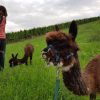 In my latest New Year’s post you have already seen him, Zapato Blanco, the alpaca by my side ;) In 2016 my parents in law gave me a gift certificate for an alpaca hike for my birthday. 30 km or so from here Christian and his family keep a bunch of 16 alpacas at the Alpacalodge and they offer activities with the alpacas. In October of 2016 Marvin and I went trekking with the alpacas for the first time. The weather was great and so were the alpacas!Marvin was really into the Alpaca he had on a leash. He is called Zapato Blanco, because of is white foot. And even though he looks like a cuddly pet he isn’t. Actually no alpaca is. They all have different characters and we liked that a lot. Zapato Blanco was about 1 year old when we first met him. He was born at the Alpacalodge, he likes to lead the herd on walks, he eats a lot and he is totally okay with being petted ;) All in all he is a pretty relaxed alpaca.
In my latest New Year’s post you have already seen him, Zapato Blanco, the alpaca by my side ;) In 2016 my parents in law gave me a gift certificate for an alpaca hike for my birthday. 30 km or so from here Christian and his family keep a bunch of 16 alpacas at the Alpacalodge and they offer activities with the alpacas. In October of 2016 Marvin and I went trekking with the alpacas for the first time. The weather was great and so were the alpacas!Marvin was really into the Alpaca he had on a leash. He is called Zapato Blanco, because of is white foot. And even though he looks like a cuddly pet he isn’t. Actually no alpaca is. They all have different characters and we liked that a lot. Zapato Blanco was about 1 year old when we first met him. He was born at the Alpacalodge, he likes to lead the herd on walks, he eats a lot and he is totally okay with being petted ;) All in all he is a pretty relaxed alpaca.
Back home we decided to become Zapato’s sponsors. Christian offers that. You become a sponsor, and in return you are always welcome to come and see how your sponsored alpaca is doing. We did not only like Zapato a lot, we also liked Cristian a lot and wanted to show our support. He dedicates all of his free time (he has a full time job that is alpaca unrelated) to giving people the opportunity to get in touch with animals. I have undertaken some hikes with alpacas now and I always had the impression being with alpacas made all the participants happy.
To be honest: I had another reason for the sponsorship: I wanted Zapato’s fur muhahaha. That’s what alpacas are usually kept for. In 2016 all the fiber was already gone, but in 2017 I was able to get Zapato’s fleece! :) as he is quite young and this was his first shearing the wool is actually Baby Alpaca and pretty soft. As I planned ahead (I’m pretty clever ;)) I ordered a drum carder way before I got the fiber. Hehe. I thought about sending the fiber away to get it carded somewhere but in the end I was just too curious about working the whole product chain myself. From walking the alpaca to wearing a sweater from his fiber ;)
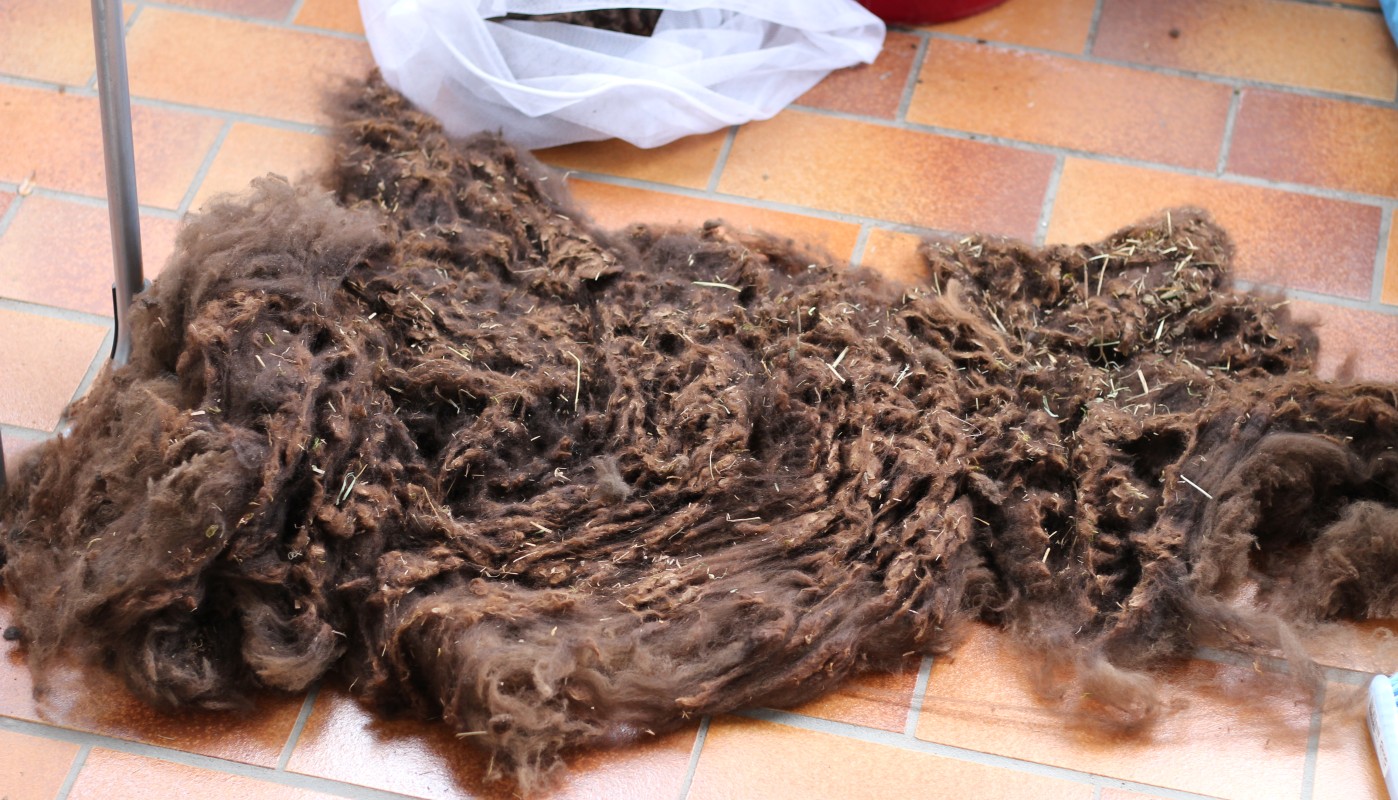 Alpaca fur consist of down and guard hairs. The guard hairs are much thicker and sturdier than the fine down hairs. When you do all the carding by yourself you can improve the softness of your finished yarn a lot by removing all those guards hairs by hand. That task usually isn’t done in industrial production.
Alpaca fur consist of down and guard hairs. The guard hairs are much thicker and sturdier than the fine down hairs. When you do all the carding by yourself you can improve the softness of your finished yarn a lot by removing all those guards hairs by hand. That task usually isn’t done in industrial production.
The result gets even nicer when instead of carding the fibers you comb them. Then they are all ordered parallel to each other. All those shorter hairs and all the vegetable remains fall out during combing. It is a lot more work though I think. Maybe I will try that this year.
But last year I simply carded the wool. I remembered to take pictures and so I want to give you an insight into my process. This was the first time I processed raw fiber and I am in now way experienced or an expert. But I have learned some lessons during the process and I had a lot of fun, so I thought maybe my experiences will be helpful or interesting to others!
I started by sorting the wool. I tried to fiddle the biggest pieces of dirt out by hand. That was a lot more work than it sounds like now. Zapato Blanco likes taking walks and I found all kinds of stuff in his wool. Lots of hay and green mater, but also little bugs, stones, feces and dry fodder. Thankfully Christian had already sorted out those parts of the Alpaca fleece that are not worth the effort, like the legs and the butt area ;) The wool from the back has the softest and longest fibers and in overall the best quality but I also used the neck and belly wool and I found that those parts were more dirty, felted and the fibers were shorter. In the beginning I tried to use as much of the wool as possible and only through very little away. After a while I started sorting those parts out that were just too dirty and those fibers that were much shorter than the rest. Because I figured that it just wasn’t worth the effort.
I thought that sorting and plucking the raw wool would suffice to be able to card it. And I thought that I could do all these steps inside my apartment. Oh how wrong I was. The wool was sooo dirty! The bigger particles weren’t even that much of a problem, but those fine sands that flew all over the place all the time. So I quickly moved to the balcony. I had read that it is not necessary to wash raw alpaca fleece. The wool doesn’t contain wool fat. Sheep wool has wool fat and I’ve read that the wool sometimes is so greasy that you can neither card nor spin it without removing the grease by washing it first. However the wool was so dusty that I decided to wash it anyway. I had read that someone somewhere in the Internet spun alpaca fiber and the fine sand sanded parts of his spinning wheel flyer. So… I don’t have a garden and I saw no other solution to my dilemma than to use my washing machine. Adventurous, I know. I put small amounts of fiber into laundry nets and let them spin a little in my washing machine. I know my machine really well and I have confidence in it not to destroy my handknits. It has never let me done. I was pretty happy to find that after running through the knit/silk program once and the rinsing program twice the wool looked fine. I put it on my balcony to dry after that. My washing machine is fine by the way. i used a special cleaner after the last load and that seems to have satisfied the machine.
I removed the guard hair after washing. I thought they might be handy to keep the wool around them from felting a little longer and they did a good job :) I’ve taken a few pictures of how the guard hair looked. They were easy to grab and pull out.
Another thing I had to deal with were clippings. That is the literal translation of the term and I’m not sure if that is the right English term for what I’m talking about. What I mean are very short hairs that you get when the shearer doesn’t manage to cut away all the wool at once, but when he cuts away the tips, realizes that the remaining wool is still too long and cuts a second time. You want to sort out this waste as it will lead to an irregular thread and I have read that keeping those cuts will lead to pilling later on. But I don’t know if that’s really true.
When the wool was dry I plugged it a little more and started carding.
I didn’t follow any procedure while carding. Just fed the fibers in. I used the Woolmakers Hero Drum Carder for that. It is pretty small and it took me an eternity! I bought a new much wider and bigger carder since then. I bought one with 72 tpi again, because I found that it worked pretty well with the alpaca fiber.
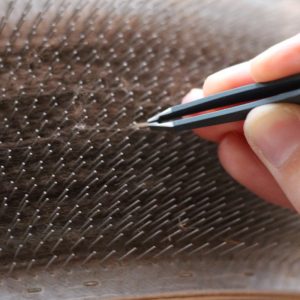 Here I have a picture for you that I took before I gave up on my perfectionism. It shows a tiny piece of hay that I sorted out. Later on I left pieces that were so tiny on the carder and only sorted out the much bigger pieces. I started by carding each batt 4 times. In the end I was down to 2 times.
Here I have a picture for you that I took before I gave up on my perfectionism. It shows a tiny piece of hay that I sorted out. Later on I left pieces that were so tiny on the carder and only sorted out the much bigger pieces. I started by carding each batt 4 times. In the end I was down to 2 times.
However I have to say that it was much easier to spin those first batts I made. The more vegetable matter there was left in the batt during spinning the more often I had to stop, disrupt my spinning, fiddle out the dirt and start again.
When I made my first yarn from the wool I really did stop everytime a piece of dirt came along ;) It took me ages to finish the yarn. It might be good to know that a lot of the dirt simply falls out of the yarn during spinning and plying. I made that experience later on. And when I write it falls out I mean that it flies all over the place and when you’re done spinning there is a circle of dirt all around you. My wheel looked terrible. I use my Woolmakers Bliss, because I know that it is easy to clean and it seems like the dirty alpaca didn’t do it any harm.
The first yarn I made for my mother in law for Christmas. I drafted the thread suuuper thin, which is easy with fibers so fine. Afterwards I chain plied. I used around 300 g of fiber. The finished yarn has grist of about 350 m/100g and it turned out sooo soft. Much softer than any baby alpaca yarn I have ever touched!
I really put a lot of work into removing every little piece of vegetable matter as well as irregularities from this yarn. And as much as I like how soft baby alpaca is, as equally much I hate that the fibers are so light that they fly all over place.
When I spun my next yarn, 300g for a scarf for Christian, I decided to spin thicker and to simply spin all those non-fibery pieces into the yarn as well. Art-Yarn so to speak :D I chain plied this yarn as well and I used a lot of twist for spinning and plying as well. I also spun both yarns using the short draw technique to prevent them from being itchy and make them more durable.
As you might be able to see in the pictures, the second yarn has more irregularities and some vegetable matter still in it. Most of it fell out during knitting and washing.
Washing the yarns was really … satisfying. So much dirt! And it all came out ;) The yarn I made for Christians scarf was DK-weight and I knitted a scarf from it using the Shifting Angles Scarf instructions by Purl Soho.
I only cast on 44 sts, as my yarn we thicker than the one suggested by the instructions. I also didn’t shift my angles, as I wasn’t sure about when I had reached the middle of the scarf and I didn’t want to have any left-overs.
The scarf turned out super soft. And even though I had washed the fiber and the yarn, a lot of dirt came out of the scarf. And I bet there still is sand in the scarf. But that doesn’t matter, Christian liked the scarf and I think that a scarf couldn’t be more authentic than this one. When you look at it closely you can see that has a lot of different shades of brown. Just like Zapato ;) Carding the wool a little more would have helped get rid of the effect, but I actually like it :)
All in all I think processing alpaca fiber is a great exercise to deal with perfectionism.. ha! ;) Especially if you have to do other things as well, like working, eating, seeping and such. I think it is a good idea to work in stages. Wash a little, card a little, spin a little. To find a good balance for yourself. A more thorough preparation makes carding easier, a more thorough carding makes spinning easier. I definitely like spinning better than carding and so I decided to not card so thoroughly.
And another experience I made, one that I have made several times with every other craft as well: you won’t save any money by processing the wool yourself. Only do it if you’re having fun.
And as you can see in the picture above I did not only process Zapato’s wool. But more on those other two alpacas another time ;)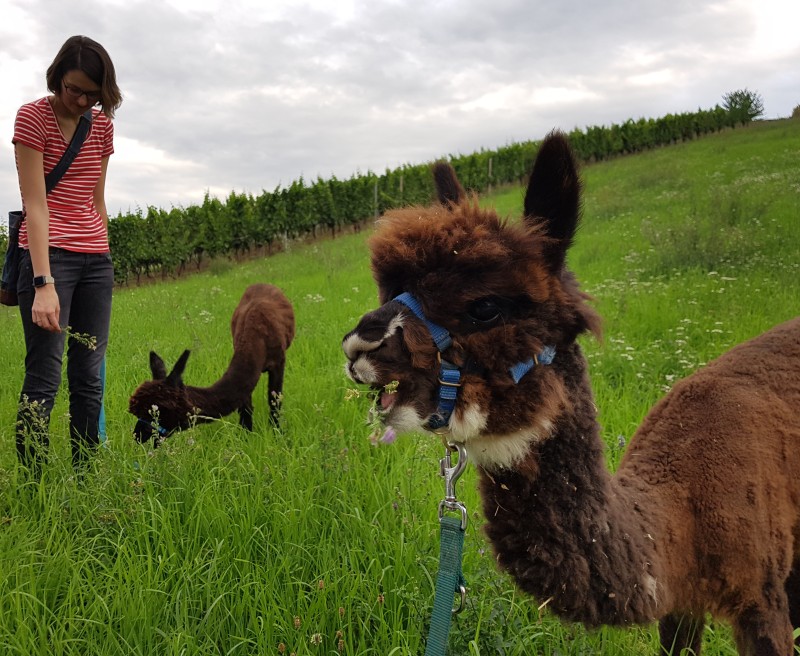
Macht’s gut
Katharina

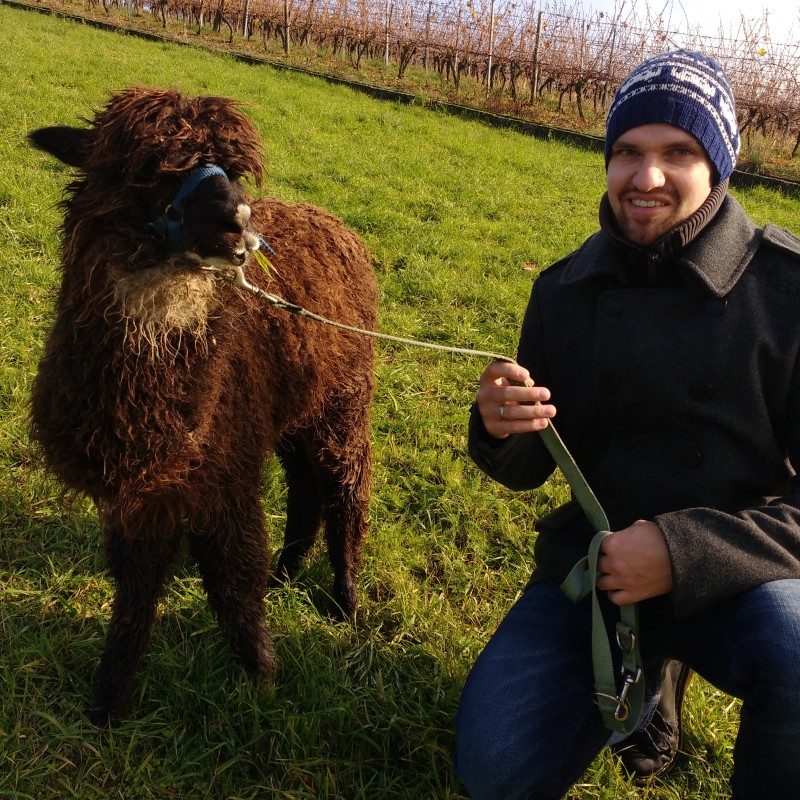
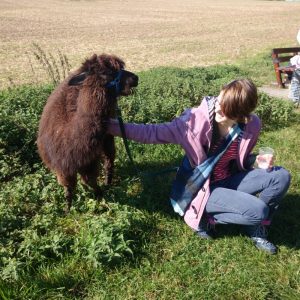
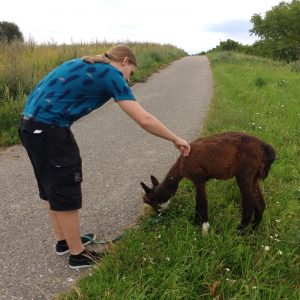

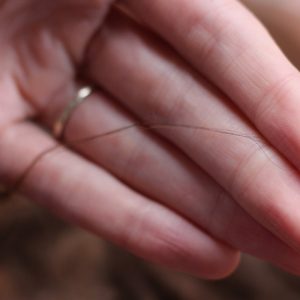
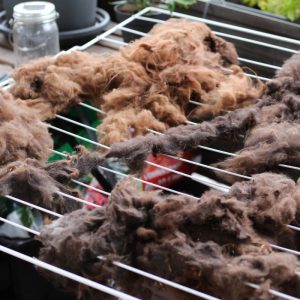

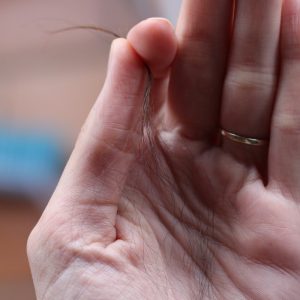
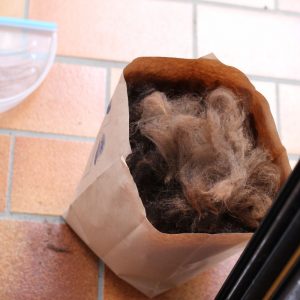
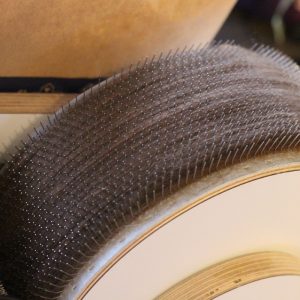
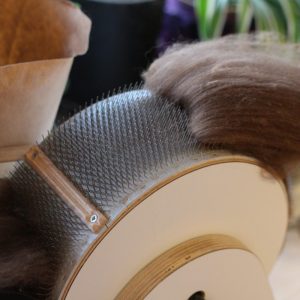
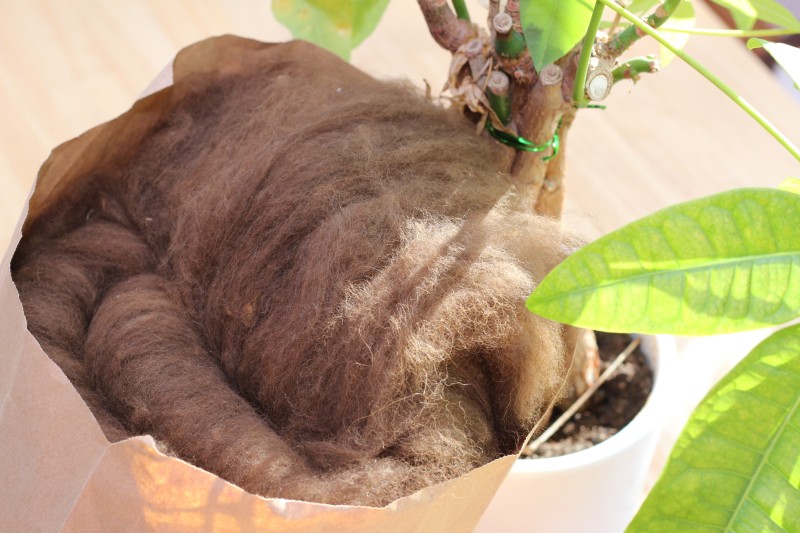
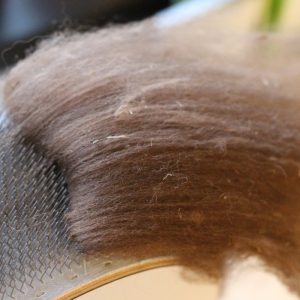
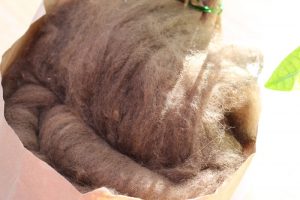
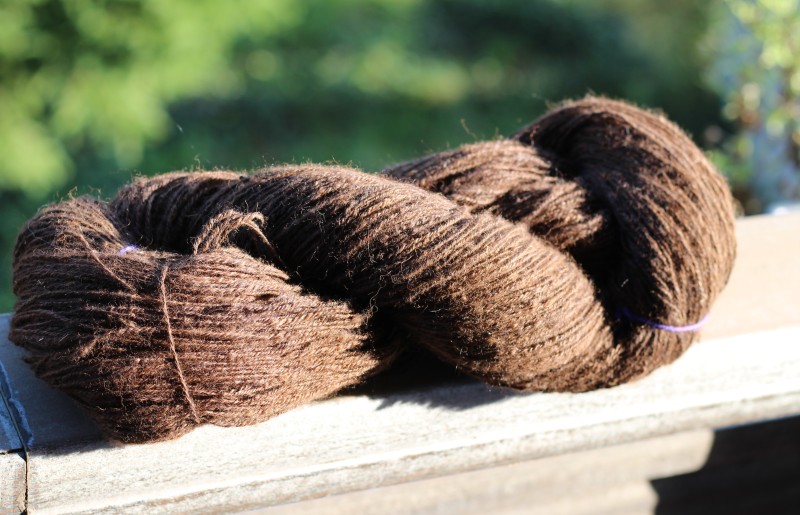



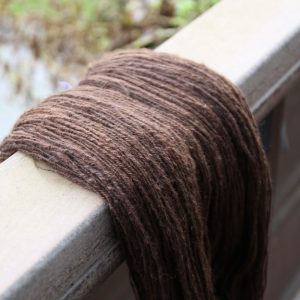
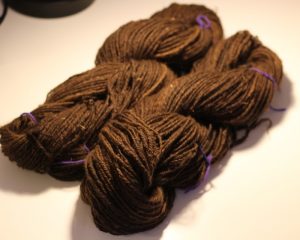

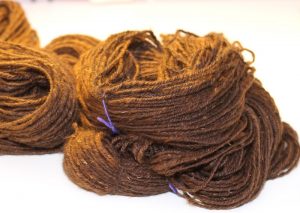
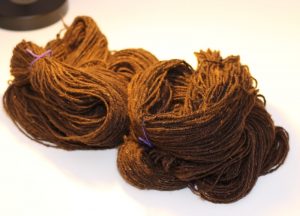

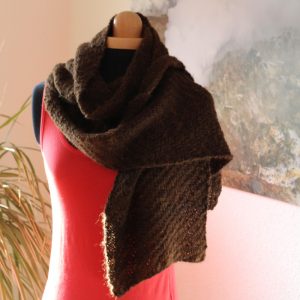

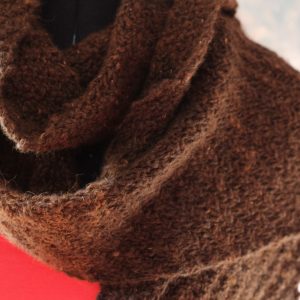



Wow Katharina, just wow! I loved this whole story and I am so in awe of your skills and patience and passion! Even my husband was interested in your post, it’s fabulous. Thank you for sharing.
Thank you so much Sue! That means a lot to me coming from you, the queen of eco dyeing :) Say Hi to Mark from me :)
It’s very cool you have your own personal source of alpaca fleece! Such a great system where you can sponsor an alpaca and support them in this way. Your finished spun yarn looks lovely!
Thank you Kirsty :)
Sooo cool! I bet Christian is super happy to be wearing a scarf from his own animals. I didn’t realise alpaca were so friendly :)
Thank you! :) They are super friendly :)
Oh wow! What a great story of your Alpaca adventure!!! Super interesting and what a joy it must be to have such an intricate connection with Zapato now. Beautiful scarf! And I especially loved the very last photo you shared.